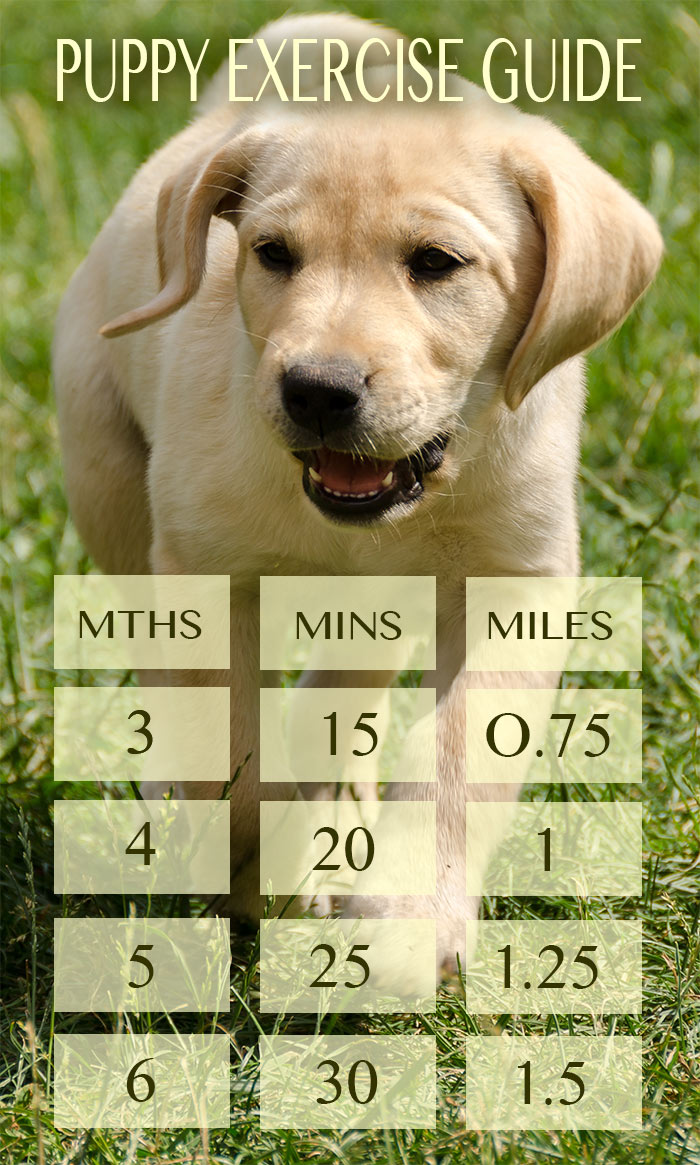The amount of exercise I give my puppies each day is influenced by various factors such as the amount of training they’ve had, how tired they are from playing, and their stage of development. As a new puppy parent, there are some general guidelines you can follow to ensure they get the right amount of exercise. Puppy exercise needs differ based on the breed, with their requirements increasing as they grow older. It’s important not to overdo it, so I will provide you with a puppy exercise chart to help you determine how much exercise is appropriate for your puppy at different ages.
We all eagerly anticipate the day when we can take our new puppy for a walk. Daily walks are a major part of owning a Labrador for many people, and it’s only natural to want to start walking your puppy as soon as they finish their vaccinations. Some new puppy owners may be unsure of what constitutes over-exercising their puppy, while others may already be taking them on long walks without realizing it could be harmful. So, how much exercise does a puppy actually need? Let’s start by looking at what breeders typically recommend.
Many dog breeders swear by the ‘five minute rule’, which suggests that a puppy should have no more than five minutes of walking for every month of their age. For example, a three-month-old puppy should not exceed fifteen minutes of exercise per day, while a four-month-old can have up to twenty minutes, and so on.

Puppies who are under three months old do not require walks due to incomplete vaccinations. Excessive exercise can be harmful to puppies as it is believed to contribute to the development of serious joint disorders, particularly in larger breeds like Labradors. Breeders are concerned about hip dysplasia, a disorder affecting the hip joints, caused by both genetic and environmental factors. Over-exercising can strain growing joints and worsen the condition of puppies predisposed to hip issues. On the other hand, puppies with healthy hips may not be negatively impacted by vigorous exercise.
It is recommended to follow the five-minute rule to prevent harm to puppies and to play it safe. While young puppies should not be over-exercised, some free running exercise is beneficial for them, based on a Norwegian study involving Labradors. While off-leash exercise in parks can reduce the risk of hip dysplasia, excessive stair climbing can increase the risk. Natural play and moderate activity are preferable for small puppies, while strenuous exercise such as hill climbing should be avoided.
It is important to consider the amount of overall energy expended by your puppy rather than focusing solely on walking. Walking is just one form of exercise, and games and training are equally valuable. Balancing exercise is essential, and if your puppy has already engaged in vigorous play, an additional walk may not be necessary. The total amount of exercise your puppy receives is what matters most.

How much exercise is too much for a puppy? While the five-minute rule isn’t always a strict guideline, it’s important to be cautious with young dogs and intense physical activity. Long walks, steep terrain, and excessive playtime with older dogs can all be detrimental to a puppy’s well-being.
It’s crucial to monitor your puppy’s activity levels and ensure they have appropriate rest time. Crating them when they’re tired or overexcited can help them recharge. Crate training is a useful tool for managing your puppy’s downtime.
Young puppies benefit from free running exercise, but formal workouts like leash walking should be limited. Strenuous activities such as stair climbing and ball chasing should be avoided in puppies under three months old. Gradually building up fitness levels is key to preventing injury in adult dogs.
Consult with your vet about the best exercise regimen for your puppy, especially considering factors like hip dysplasia. Stay informed about the latest research on puppy health and wellness, and rely on your vet’s expertise for guidance.
For comprehensive advice on raising a happy and healthy puppy, check out The Happy Puppy Handbook for valuable insights.

(paid hyperlink)
Please rephrase the provided content to ensure originality and uniqueness. This will help avoid plagiarism. The writing style should be casual and in English.
Released in April of 2014, the Happy Puppy Handbook provides comprehensive guidance on caring for a young puppy. This helpful book covers everything from preparing your home for your new furry friend to tips on potty training, socialization, and basic obedience training. If you’re interested in purchasing The Happy Puppy Handbook, you can find it on Amazon through this link (paid link). By making a purchase through this link, you’ll also be supporting The Labrador Site as we receive a small commission, which we greatly appreciate and won’t impact the cost to you! Some references used in the book include studies on diet and exercise as potential risk factors for conditions like osteochondritis dissecans and hip dysplasia in dogs. (Slater et al. 1992, Sallander et al. 2006, Krontveit et al. 2011)




